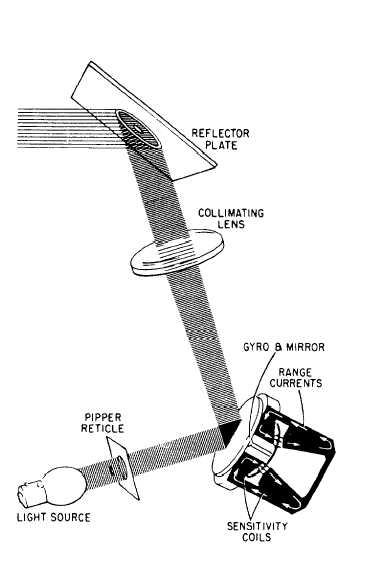compass card. The compass card moves with the
heading of the aircraft. The distance counter indicates
the distance to the selected station. There are two
pointers—a single bar and a double bar. These
pointers or bars can indicate (1) bearing to a ground
electronic station, (2) bearing to destination,
(3) aircraft ground track, (4) aircraft drift angle, or
(5) heading error.
The available combinations of
these indications are limited by the BDHI select
switches used in the given aircraft configuration.
Primary Functions
Electrical signal inputs for
the pointers come from the
the compass card and
synchro transmitters
located in the various navigational systems. The
compass card will follow the heading of the aircraft
and is read at the lubber index. The distance counter
may display distance to base, target, or ground station,
depending upon the mode selected. It consists of
three synchro torque receivers to position the units,
tens, and hundred numerals. There is also a 1,000 flag
to place the numeral 1 preceding the hundreds
numeral, which enables the counter to display
distance up to 1,999 nautical miles. The OFF flag
covers the distance counter when distance
information is not provided or is unreliable.
HEADS-UP DISPLAY (HUD)
Learning Objective: Recognize components
and functions of a typical Heads-Up Display
(HUD) tactical display system.
Modern aircraft are equipped with instruments
and displays to provide the aircrew with up-to-date
visual information about the performance of the
aircraft. Since the advent of airborne computers,
radar, and other state-of-the-art avionics equipment,
the concept of visual information has taken on a new
meaning. In this age of lasers, high-speed missiles,
nuclear submarines, and stealth aircraft, the Navy has
had to incorporate new visual display systems, and
constantly improve these systems as technology
advances. The visual display system, commonly
called the “tactical display system” (TDS), is used by
the aircrew to search for, attack, and destroy the
enemy. The TDS is also used to gather information
about the enemy and to allow the aircrew to defend
the aircraft when attacked.
The airborne computers are used to gather
information from all aircraft sensors and systems.
They then perform high-speed solutions and send out
continuously updated information to the various
tactical display systems on the aircraft. These display
systems vary from aircraft to aircraft, and the
information displayed depends on the type of mission
the aircraft was designed to perform.
The typical HUD TDS is an electro-optical
sight system for use only by the pilot. The
purpose of the electro-optical display unit is to
display attack and flight information directly to
the pilot’s field of view. The electro-optical
display uses a light source (fig. 5-6) to display
Figure 5-6.-Basic principle of a sight unit.
5-5

